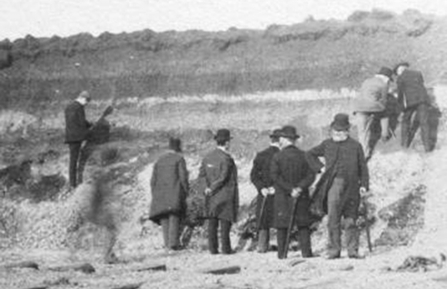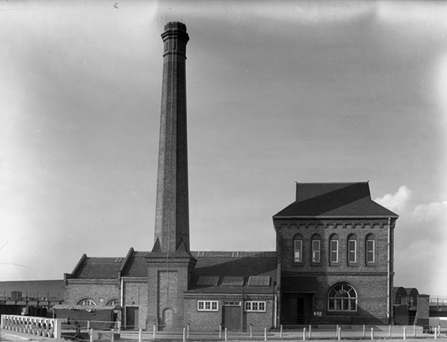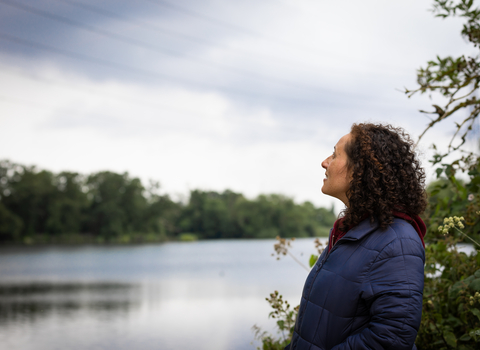The wildlife conservation and industrial value of Walthamstow Wetlands is truly unique in London and the opening of the site as a nature reserve now allows more people to access its natural and architectural heritage. Read on to discover the rich history of this beautiful and culturally important site.
Heritage
For centuries the River Lea provided transport and powered mills that were vital for local industries. The area was justly famous for its good fishing. But from the mid-19th century, this rural landscape of rivers, marshes and farmland was dramatically transformed by the creation of the reservoirs.
London’s rapidly growing population urgently required a greater, more reliable supply of clean water and Walthamstow was chosen as an ideal location for this purpose. Ten reservoirs were created between 1863 and 1904, each one a greater feat of Victorian and Edwardian engineering skill, and have provided millions of Londoners with their drinking water ever since.
1852
In 1852, the East London Waterworks Company (ELWC) was granted permission to develop land at Walthamstow for reservoirs and by 1863, the first stage of the reservoirs development was completed with the construction of Reservoir Nos. 1, 2 and 3. Collectively they occupied just under 18 hectares of land and were all laboriously hand-dug by teams of ‘navvies’. In 1866, a drought in London and serious problems with water quality resulting in a cholera epidemic drove the second phase of construction - Reservoir Nos. 4 and 5 were now added. With London’s fast-growing populating, the High and Low Maynard Reservoirs were completed in 1870 for additional water storage whilst in 1887, a Davy compound engine (a new and powerful type of steam engine used widely for pumping at waterworks and mines during the late Victorian era) was installed at the Coppermill for use in the fast-expanding reservoirs system.
1894
In 1894, the Engine House was built and remained in service until the 1980s - known initially as Ferry Lane Pumping Station, and later, the Marine Engine House, it was designed by ELWC’s architect H. Tooley under the watchful eye of Chief Engineer W. B. Bryan. Underneath the building was a network of underground reservoirs, chambers and pipes that linked the reservoirs and reached as far as Stoke Newington. In 1895, the East and West Warwick Reservoirs were completed and named after the Countess of Warwick, heiress of the local Maynard family, who sold the land to ELWC.
1897
In 1897, Lockwood was the last reservoir to be created and also the largest – covering 30 hectares and excavated to a depth of around 8 metres. Named after one of the ELWC’s directors, it was a major engineering feat for its day - requiring a huge labour force of 1,250 men. Unlike the first reservoirs, which were dug mainly by hand, Lockwood was constructed with plenty of steam-powered pumps, engines and cranes - as well as a team of 50 horses!

© Thames Water
1904
In 1904, the Metropolitan Water Board became the new owner of Walthamstow Reservoirs following a series of mergers and nationalisation. In 1940, Walthamstow was hit by the first of many German bombs during the Blitz in World War II and several of the reservoirs were damaged whilst Lockwood’s water level was lowered to limit potential flooding during the war years. In 1951, the Ferry Boat Inn and Coppermill were designated Grade II Listed Buildings for their architectural features and unique place in local history.

The Engine House
1973
In 1973, the Thames Water Authority became site manager following the creation of new regional water authorities, public bodies responsible for water supply, navigation, land drainage, sewage treatment and fisheries. A few years later in 1975, Walthamstow Reservoirs’ important status for London’s wildlife was officially recognised for the first time with its designation as a Site of Special Scientific Interest. In the 1980s, the Marine Engine House was decommissioned and as a result, was used mainly as a storage space until it was redeveloped as part of the new Walthamstow Wetlands over 30 years later.
1989
In 1989, the water supply and sewage treatment aspects of the Thames Water Authority were privatised, leading to the company of today and in 2000, the site was designated part of the Lea Valley Special Protection Area for wildlife - also gaining international ‘Ramsar’ status as a major part of the valley’s internationally important wetland habitat.
2017
In 2017, after several years of planning, building restoration and habitat enhancement, Walthamstow Wetlands re-opened to the public with the reservoirs continuing to provide Londoners with their daily drinking water – just as they’ve done continuously for the past 150 years.
The locally-listed Engine House, including the Visitor Centre and Café, has been redesigned and redeveloped with the addition of a unique swift tower to attract nesting swifts and roosting bats, whilst the Grade II-listed Coppermill Tower offers a viewing platform to enjoy sweeping views of the capital.




